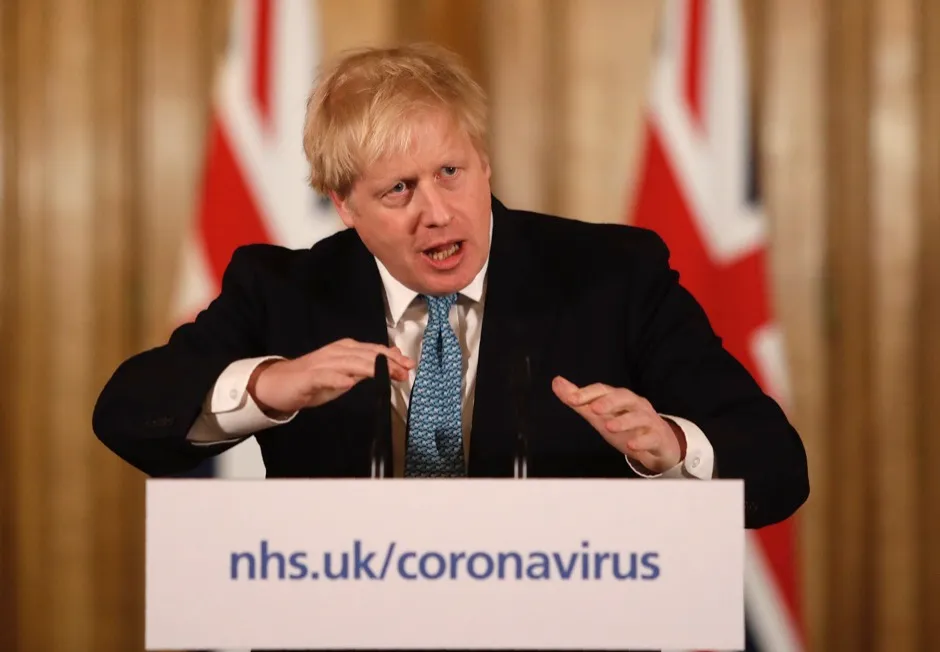Imposing lockdown restrictions earlier has been linked to greater reductions in new coronavirus cases, a study has found.
The research, published in the BMJ, also found that physical distancing measures, such as closing schools, workplaces and public transport, and restricting mass gatherings, were associated with a “meaningful reduction” in new COVID-19 cases.
Based on data gathered from 149 countries and regions, the study found that on average the implementation of any physical distancing measure was associated with an overall 13 per cent reduction in COVID-19 incidence.
Read the latest coronavirus news:
- Oxford vaccine: Early trials suggest 'double protection' from coronavirus
- Coronavirus: Will face masks reduce transmission?
- COVID-19: Llama-based antibody treatment 'neutralises' virus
A team of UK and US researchers compared the change in new cases of COVID-19 before and up to 30 days after implementation of physical distancing measures in the early stages of the pandemic.
Their findings are based on daily reported cases of COVID-19 for 149 countries or regions that implemented one or more of five physical distancing measures between 1 January and 30 May.
These were closing schools, workplaces and public transport, restrictions on mass gatherings and public events, and lockdown restrictions on people’s movement.
They found that, in combination with school and workplace closures, restriction on mass gatherings seemed to be “a key component” associated with a decrease in new COVID-19 cases.

However, closure of public transport was not associated with any additional reduction in incidence when the other four physical distancing measures were in place.
Researchers said the data also showed that earlier implementation of lockdown, together with other physical distancing measures, was associated with a larger reduction in the incidence of COVID-19.
The study added: “Physical distancing interventions were associated with reductions in the incidence of COVID-19 globally.
“Earlier implementation of lockdown was associated with a larger reduction in the incidence of COVID-19.
“These findings might support policy decisions as countries prepare to impose or lift physical distancing measures in current or future epidemic waves.”
The researchers also found that on average physical distancing measures were first implemented nine days after the first reported case in a country.
However, they said that some countries took longer to implement measures, including Thailand at 58 days, Sri Lanka and the UK both at 45 days, and Cambodia, Sweden and the USA at 40 days.
But the researchers said that the study was limited in its ability to “establish cause” as well as being unable to assess compliance with physical distancing or the use of other measures which might reduce transmission such as face coverings or contact tracing apps.
How can I protect myself from the coronavirus when shopping?
You’ll have seen signs in your local supermarket advising you to keep two metres from others while moving around the store. This is key to reducing your chances of catching the virus while shopping.
The coronavirus SARS-CoV-2 is spread through respiratory droplets that leave our mouth and nose when we cough, sneeze, or sometimes even talk. The droplets sprayed out by an infected person will contain the virus, which could then enter your body via your mouth, nose or eyes (this is why you shouldn’t be touching your face).
Respiratory droplets don’t usually travel more than one metre, so by keeping two metres from others, you’ll reduce the likelihood of being in the firing line. To make it easier to keep your distance, try to shop during off-peak hours, choose a store that’s limiting the number of people who can be inside at any one time, and use self-checkout if you can.
Keeping your hands clean is the other main thing you can do. If possible, wipe the trolley or basket handles with a disinfectant wipe when you arrive at the store. When you get home, wash your hands or use hand sanitiser before and after unpacking your bags.
A US study found that the coronavirus can survive for up to 24 hours on cardboard, and up to three days on hard, shiny surfaces such as plastic, so wiping down your purchases with a disinfectant spray or a soapy cloth before you put them away is another good habit to get into.
Read more:
